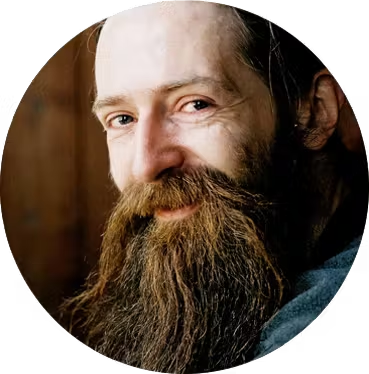Dr. Aubrey de Grey, a biomedical gerontologist, is one of the leading figures in global aging research and a strong advocate in all aspects of the field, from research, investment, to public policy regarding aging. His provocative view that medical technology will one day allow humans to control the aging process and live healthily into our hundreds or longer, is becoming less radical these days. Today both the academic and private sectors are racing to tackle aging.
Aubrey talks to IIOL about why we age, where the longevity sector is today and what the opportunities are for new companies entering the field.
What is your own definition of aging?
Dr. de Grey: I define aging as the lifelong accumulation of damage in the body, and damage as changes that have happened throughout life at molecular cellular level, as consequences of the way the body works, (our normal metabolism). These accumulate because they are not eliminated by other processes in the body. If they accumulate, eventually, they get to the point beyond what the body is able to tolerate. So we understand what aging is – it’s not a mystery or an enigma.
So how would you describe the healthy longevity and life span extension sector? And what are the major breakthroughs and opportunities and challenges?
Dr. de Grey: It only became a sector in the commercial sense over the past couple of years. A lot of people, including people with money, have gradually started to understand the kind of things I’ve been saying for nearly 20 years. Namely, that if aging is just the accumulation of damage, then the natural thing to do is to try to keep people healthy late in life and to repair that damage, to do preventative maintenance periodically, the same as you would with a car or an airplane. People have found particular examples where one can already do that and we’re going to develop more and more of these examples because the body is really complicated and creates lots of different types of damage and we have to fix them all. So there are a lot of opportunities to create therapies that are really effective, but individually and especially in combination, there is a lot of money to be made.
What are the opportunities for newcomers, private investors and international research institutes to successfully enter this growing sector ?
Dr. de Grey: The best way I can describe the opportunity in the longevity sector is it’s like the .com boom, and if anything even bigger, it’s accelerating faster. I believe it’s going to end up accelerating even further and be bigger than the .com boom because everybody wants to be out there. And for the newcomers, the first really good thing is that it is a very cohesive, friendly, mission-driven community. Pretty much all of the major players who are influential, whether as investors or CEOs, are people who have been in the field one way or another for a long time, or if they haven’t, they have definitely got into it not only to make money but to do good. That means that it is easy to obtain information that will help you to make your own contribution and become part of this community. The other thing that makes it really easy to get into is because it’s growing so fast, it’s not really competitive. The rate at which new companies are coming along looking for money is balanced by the rate at which new investors are coming along offering money. So, when any one company succeeds, it floats all boats. Other companies benefit just by the reputation and credibility of the whole field rising. So you can just come and talk to people.
What is the main role and focus of the SENS Research Foundation?
Dr. de Grey: We are a California-based public charity. Our purpose is to be the engine room of the industry. We identify problems, aspect of aging, types of damage that need to be repaired, and that nobody knows how to repair yet. We work on those things as research projects, either internally in our own laboratory, or we fund laboratories elsewhere at universities and institutes. We fund those for as long as it takes, with purely philanthropic funding sources until they get to a point where some visionary investors or others decide that they are ready for prime time. At which point, we spin them out into a company. That’s generally what we do. Sometimes the company is headed by someone who used to work for us, sometimes by a professor that we used to fund. Then we take just a small equity protection ourselves. We don’t want to dilute others’ equity. We transfer the IP and the company goes on and succeeds. That’s our business model.

I believe in 2050 we will hardly have any sick people at all.
What are the most disruptive technologies in this field at the moment?
Dr. de Grey: All of the technologies that are coming along in this space are very disruptive, because they are all doing things that have never been done before. The idea that you could eliminate these things called senescent cells that were discovered more than 50 years ago has been around for a while, but no one has ever done it. Suddenly, we have got half a dozen different people trying to do it and half a dozen different ways and succeeding, and going to clinical trials really rapidly. That’s pretty disruptive. Using bacterial enzymes to eliminate waste products, which is something that we’ve been fond of for a while, sounds pretty crazy at first, but it actually works quite well. But the biggest disruption of all will come in the future when we get enough of the therapies sufficiently far along so that we can combine them and give them at the same time to the same people. And that will have much more than an additive effect, it will have a very synergistic effect.
How do you see the healthcare industry changing by 2050?
Dr. de Grey: I believe the healthcare industry in 2050 will be overwhelmingly focused on prevention. In other words, we will hardly have any sick people at all, however long ago they were born. This is because we will know how to repair all of the types of damage that matter, or at least close enough to all, that we are able to stay one step ahead of the problem and incrementally improve the therapies thereafter. And that is going to be a big change. Today, the medical industry makes its money out of sick people, out of developing medicines that keep sick people alive, in a bad state of health and having to continue to have to buy medicines. It’s not going to be like that anymore. Public attitudes and thereby public opinion and public policy, and also therefore commercial policy, will shift into a more preventative direction. Of course, it’s not prevention in the sense that “exercise or you could die ” as a preventative. It’s a sweet spot between prevention and treatment in the sense that what we’re doing here is repairing damage and taking someone biologically back in age. Back in time. But it is preventative in the sense that we’re doing it to people who are not yet sick.
A number of recent studies including the one from Calico and Ancestry International, have determined that only 10 percent (or less) of the variation in human longevity is due to genetic factors. If that is the case, it means that the remaining 90 percent is in our hands and can be influenced by our environment and lifestyle choices. What do you think about these statistics?
Dr. de Grey: There is a huge amount of oversimplification in the discussions that take place such as the ones you have talked about regarding subdivision and partitioning of what causes the variation in aging. First of all, what we have to remember is that you have to define that you’re talking about the human race. If we talk about mammals, then 98 percent of the variation in longevity is genetic, obviously. So that’s one thing that people just leave out. The other thing that is often left out is people say “okay everything is either genetic or environment,” lifestyle and so on. That’s not true either. What you really need to think of is there is change, there’s environment, and then there is simple chance. What I mean here is not like whether you get hit by a truck, I mean chance at the molecular level, Brownian motion kind of chance, which is incredibly important at the very beginning of life. When cells are dividing fast, there’s not much time to do error checking so people just get born at not quite the same biological age. And it is quite likely that most of the increase we’ve seen in average longevity over the past 50 years, has been because people get born younger. They had better nutrition prenatally, greater prosperity, and it just stays with you throughout your life. That’s something that’s often completely neglected. However, the question of how much genes play a part is quite an interesting one. And yes, you’re quite right. There is a trend these days for new studies to identify that if you do the thing more rigorously, or with more data, then you actually get smaller numbers, maybe 10 percent, maybe even less than that, than the kind of 25 percent or so other people used to say. But there is a caveat, which is that is if you look at average life span. If you look instead at the heritability of extreme life span, let’s say the likelihood of getting to 100, then it turns out to be quite a lot higher, maybe even as much as 50 percent.
Thank you very much.

